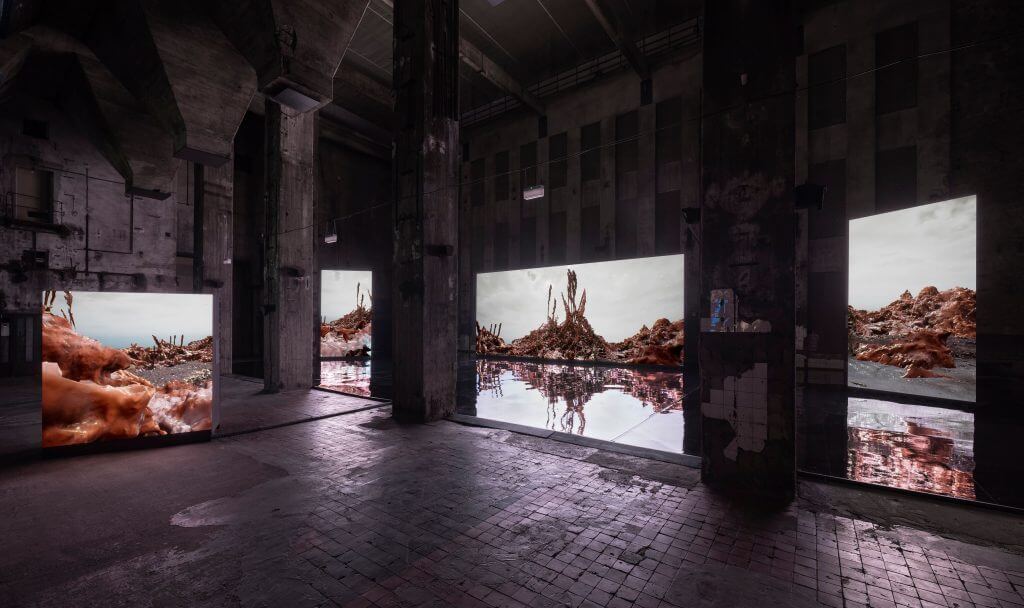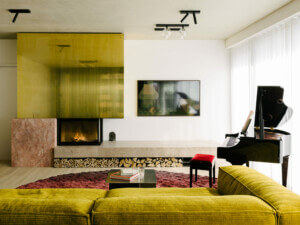Since its founding in a former power plant building in 2004, Berlin’s Berghain has become the most famous nightclub in Europe, assuming the unofficial title of “world capital of techno.” Its doors are continuously open to the public from Saturday night until Monday morning, playing host to a level of debauchery that has become characteristic of the city’s nightlife (pre-pandemic). You can see almost anything happening on the dance floors at Berghain (if you can get in, the club is notoriously difficult to access), but if there’s one thing a visitor might not expect, it is space for peace and contemplation.
That all changed last month when Berlin-based Danish artist Jakob Kudsk Steensen transformed the cavernous club, now empty due to the ongoing COVID-19 pandemic, into an immersive, screen-laden lair of strikingly surreal imagery. Steensen’s installation, titled Berl-Berl in reference to an old Slavic word for “swamp” and the likely etymological root of Berlin’s name, employs gaming software and sound from the artist Matt McCorkle and singer Arca to inject the space with an other-worldly audio-visual aura.

The moving images projected onto massive screens throughout the space, however, are actual photographs of the swampland that once filled the region in and around the German capital. For the exhibition, Steensen collected pictures of the few remaining fragments of Berlin’s natural wetlands, as well as stills housed in the city’s Nature Museum, to assemble a 3D display that feels at once mesmerizing and eerie. Images of thick brush, grasses, and fungi are interspersed with those of towering trees and open sky, alluding to Sorbian folklore and mythologies that predate the draining of Berlin’s swamps. It is an attempt at virtual “rewilding,” or the act of relinquishing land to the curative and invigorating control of nature.

The show was put together by the Berlin-based art nonprofit Light Art Space (LAS), whose curatorial work has centered on the interplay of technology, light, and science. The foundation typically arranges one or two shows per year in Berlin, often converting large former industrial spaces into temporary galleries. For Berl-Berl, LAS was joined by Emma Enderby, the chief curator of New York’s The Shed, who praised the organization’s highly experimental approach to the display of art.
Berl-Berl is on view through September 25, 2021. If you can’t make it out to Berlin, Berl-Berl is also available online at BerlBerl.world.











